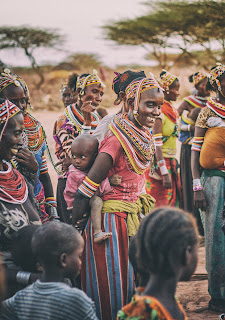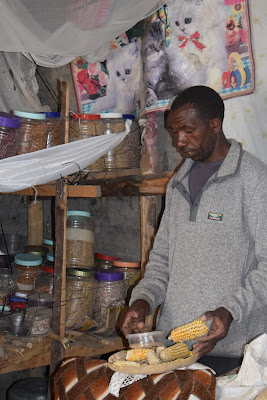Women
adapt to changing climate using climate-smart techniques, but water remains a
thorn in the flesh. BY FELISTA WANGARI
Before Mary Mathule got
together with her neighbours to form the Kikumini Muvao Farmers Self-Help Group
in Makueni, in 2012, life was difficult.
“Getting money for food
was a struggle and we often ate one unbalanced meal a day. It was either ugali
or plain maize with black tea, in the evenings,” she recalls.
When she first moved to
Muvao location as a newly-wed in 2003, she remembers it raining sufficiently
twice a year. Over the years, however, the rainfall patterns changed and crop
failure became the norm. Ms Mathule and her neighbours had to put more effort
to reap a harvest.
While the climate hasn’t
improved, their farming techniques have, since they formed the 17-member group
and started practising climate-smart agriculture. Their livelihoods have also
improved.
“We used to lose most of
our crop as residue on the farm because of insufficient rain. Harvesting was a
dream. We decided to do proper farming. Now, I have enough food and I am in
agribusiness,” says Ms Mathule, who currently has cowpeas, beans and maize crop
from improved drought-resistant seed on her farm. She also raises day-old
chicks for sale and keeps dairy cattle for milk.
In addition to their
individual farming, the Muvao farmer’s group also farm as a group on a
one-and-a-quarter acre they bought together. They occasionally lease three
acres too, whenever there is sufficient rain. They also rear chicken and run a
general shop.
“This past season we
didn’t lease farmland because we heard on the radio that there wouldn’t be
sufficient rain, so we decided not to waste our money,” says Hellen, one of the
members of the group.
Ms Mathule started
rearing poultry in 2015 with 10 improved chicken and 20 local (kienyeji)
chicken.
“I started noticing the
change in 2018 and by 2019, I became known as a serious chicken farmer,” says
Ms Mathule, who adds that since they started practising climate smart
agriculture, the survival of their crops has improved, especially in the
reality of insufficient rains.
“In the group we learn
about selecting drought-resilient seeds, fighting pests, using fertiliser and manure and early
planting and staying up to date with information on the weather as ways to
adapt to the changed climate conditions,” says Hellen.
“When the climate
changes, you also change as a farmer. That’s what smart agriculture is about,”
says Ms Mathule.
With their village
savings and loans association (VSLA), they have access to credit to fund their
individual and group farming, as well as other needs like school fees. Last
year, Ms Mathule used a loan and her dividends from the VSLA to add chicks to
her poultry project. Selling their
poultry as a group also helps them fetch better prices than they would as
individuals.
“The main challenge for
farmers is that when you put money in the farm, you are not assured that you
will get a return. Perhaps what you harvest will be just enough to cover costs.
That’s why we must practise climate smart farming,” says Ms Mathule.
Some of the techniques
the farmers are using are planting resilient seeds suitable for drylands,
mulching, planting cover crops and ripping with tractors instead of ploughing,
as part of conservation agriculture. They also practice crop rotation.
“When people complain of
no harvest, you will not lack something to eat if you practise this type of
agriculture. For pest control, monitor the crops early and spray that section
if you find pests, to save the crop from infestation,” says Ms Mathule.
Even as they adapt to
the changed weather patterns, Ms Mathule says that water remains a major
challenge and suggests that digging farm ponds would be helpful as people can
use that water for kitchen gardens to promote food sufficiency.
“We went to Tharaka
Nithi and found it was even drier, but people had farm ponds which provided
water for farming. When I came back home, I dug one, but within two weeks after
the rain, the water had dried up, so I was advised to get a dam liner, but the
cost of getting the dam done properly at Sh80,000 is rather high.”
For now, when the rains
fail, the farmers rely on the community borehole about 10 kilometres away, or the
community pond that is nearer home. They also buy water from neighbours with
ponds.
In the neighbouring
Sinai village, where Elizabeth Mutisya leads a 42-member group of farmers, the
members bought two hens and a cock for each person, through table banking, to
produce eggs for their consumption.
Ms Mutisya has learnt to
plant drought-resilient cereals like cow peas and green grams, which withstand the changing weather better. Like
the other women farmers, she says that water is still a challenge for most
farmers.
“What people need are
dams so that if it rains they can collect water for vegetables because it has
become harder to rely on rain-fed agriculture,” says Ms Mutisya, who had a farm
pond dug just before the previous rain season in October.
This feature is supported by a grant from
WAN-IFRA’s Women in News
Social Impact Reporting Initiative on Climate Change














